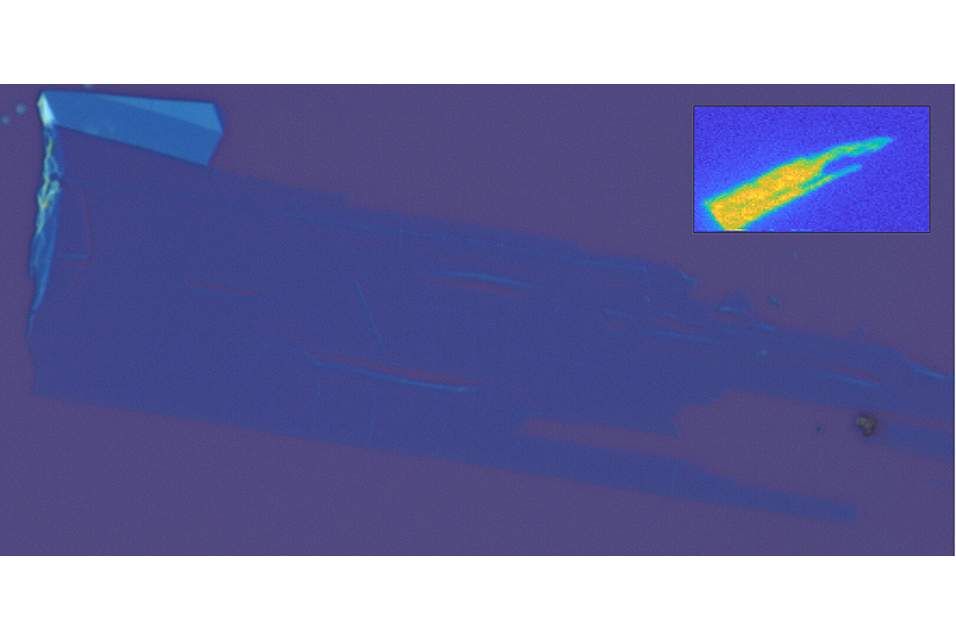MELBOURNE.- Ultrashort pulses of light are proven indistinguishable from continuous illumination, in terms of controlling the electronic states of atomically thin material tungsten disulfide (WS2).
A new Swinburne-led study proves that ultrashort pulses of light can be used to drive transitions to new phases of matter, aiding the search for future Floquet-based, low-energy electronics.
There is significant interest in transiently controlling the band-structure of a monolayer semiconductor by using ultra-short pulses of light to create and control exotic new phases of matter.
The resulting temporary states known as Floquet-Bloch states are interesting from a pure research standpoint as well as for a proposed new class of transistor based on Floquet topological insulators (FTIs).
In an important finding, the ultra-short pulses of light necessary for detecting the formation of Floquet states were shown to be as effective in triggering the state as continuous illumination, an important question that, until now, had been largely ignored.
A continuous wave or ultrashort-pulses: The problem with time
Floquet physics, which has been used to predict how an insulator can be transformed into an FTI, is predicated on a purely sinusoidal field, i.e. continuous, monochromatic (single wavelength) illumination that has no beginning or end.
To observe this phase transition, however, only ultrashort pulses offer sufficient peak intensities to produce a detectable effect. And there's the rub.
Turning even the purest light source on or off introduces a wide range of additional frequencies to the light's spectrum; the more abrupt the switching, the more broadband the spectrum. As a result, ultrashort pulses like those used here don't conform to the assumptions upon which Floquet physics is based.
"Ultrashort pulses are about as far as you can possibly get from a monochromatic wave," says Dr. Stuart Earl at Swinburne University of Technology (Australia).
"However, we've now shown that even with pulses shorter than 15 optical cycles (34 femtoseconds, or 34 millionths of a billionth of a second), that just doesn't matter."
Pump-probe spectroscopy of atomic monolayer elicits an instantaneous response
Dr. Earl, with collaborators from the Australian National University and the
ARC Centre for Future Low-Energy Electronic Technologies, subjected an atomic monolayer of tungsten-disulfide (WS2) to light pulses of varying length but the same total energy, altering the peak intensity in a controlled manner.
WS2 is a transition metal dichalcogenide (TMD), a family of materials investigated for use in future 'beyond CMOS' electronics.
The team used pump-probe spectroscopy to observe a transient shift in the energy of the A exciton of WS2 due to the optical Stark effect (the simplest realization of Floquet physics). Thanks to their use of a sub-bandgap pump pulse, the signal they measured, which persisted only for as long as the pulse itself, was due to interactions between equilibrium and photon-dressed virtual states within the sample.
"It might sound odd that we can harness virtual states to manipulate a real transition" says Dr. Earl. "But because we used a sub-bandgap pump pulse, no real states were populated."
"The WS2 responded instantaneously, but more significantly, its response depended linearly on the instantaneous intensity of the pulse, just as if we'd turned on a monochromatic field infinitely slowly, that is, adiabatically" explains Professor Jeff Davis, also at Swinburne University of Technology. "This was an exciting finding for our team. Despite the pulses being extremely short, the states of the system remained coherent."
An adiabatic perturbation is one that is introduced extremely slowly, so that the states of the system have time to adapt, a crucial requirement for FTIs. While ultrashort pulses shouldn't be compatible with this requirement, this result provides clear evidence that for these atomic monolayers, they do. This now enables the team to attribute any evidence of non-adiabatic behavior to the sample, rather than to their experiment.
These findings now enable the FLEET team to explore Floquet-Bloch states in these materials with an above-bandgap pulse, which, theoretically, should drive the material into the exotic phase known as a Floquet topological insulator. Understanding this process should then help researchers to incorporate these materials into a new generation of low-energy, high-bandwidth, and potentially ultrafast, transistors.
Systems exhibiting dissipationless transport when driven out of equilibrium are studied within FLEET's Research theme 3, seeking new, ultra-low energy electronics to address the rising, unsustainable energy consumed by computation (already 8% of global electricity, and doubling every decade).










